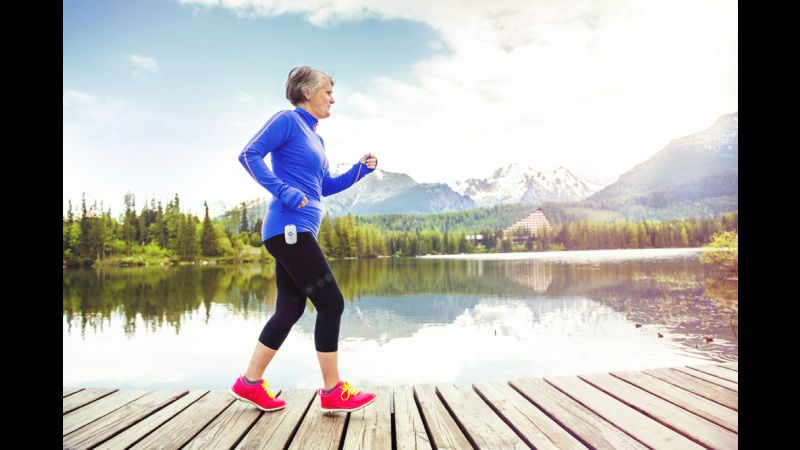Okay, we get it. Eat right and exercise to look and feel your best. But as we age, incorporating exercise can be a little more daunting. What if, however, a new study not only showed that exercise can reduce falls, but that working out a little bit harder and intensely can really improve your physicality.
Balance and Strength Training
Balance and muscle strength have proven to protect seniors from broken bones and other serious injuries in the past. According to the U.S. Centers for Disease Control and Prevention, one in three adults over the age of 65 experiences a fall. Falls are the leading cause of fatal and non-fatal injuries in seniors.
The leading author of the study, Saija Karinkanta, a scientist at the UKK Institute for Health Promotion Research in Tampere, Finland, found that training harder and more intensively allows the body to really improve. Karinkanta and her team randomly assigned 149 participants to incorporate resistance training, balance exercises, workouts combining both muscle and balance exercises, and no exercise at all. The participants were women between the ages of 70 and 78, living at home while having a sedentary lifestyle or did moderate exercise no more than twice a week. None of the women had any signs of osteoporosis, or thinning bones, which increases the risk of injury in the event of a fall, especially in older women. The women who were assigned to the exercise groups participated in six weeks of moderate activity before preparing for more supervised, intense workouts.
When following up with the women after 5 years, they found that 60 women had a total of 81 fall-related injuries. The women who participated in both balance and strength training had a 51% lower risk of fall-related injuries and were 74% less likely to have fractures. The study found that performing only balance workouts or only strength training did not reduce the risk of fall-related injuries.
The researchers also took into account that some falls might not have been reported, as they only analyzed data on falls women reported to healthcare providers. Regardless, Dr. Elizabeth Joy, medical director for clinical outcomes research at Intermountain Healthcare in Salt Lake City, believes these findings support the growing research that exercise can truly help prevent falls and fall-related injuries.
Get Active
The issue, Joy said, is that not nearly enough seniors exercise and that only one in ten seniors get the physical activity they need. Another issue that prevents many seniors from staying active is sarcopenia, or loss of muscle mass, leading to a decline in strength and endurance. This makes it more difficult to participate in physical activity.
To prevent muscle mass deterioration, start participating in resistance training to increase muscle mass, improve strength, endurance and power. Ultimately, these exercises can not only prevent a fall, they can prevent detrimental injury. According to Joy, the best part is that you are never too old to start.
If you have a sedentary lifestyle, try incorporating movement and activity into your everyday routine. Here are a few easy tips to help you get started:
- Stretch: When done properly, stretching increases flexibility and helps your body relax.
- Move during commercials: It is okay to want to relax after a long and stressful day. But try to move as much as you can during commercial breaks! Walk in place or use an exercise mat to do simple, full body exercises.
- Put on music: Dancing to music you love is a great way to keep moving while also putting you in a better mood!
- Household Chores: Activities such as cleaning the house or mowing the lawn can actually cause you to break a sweat. For those who hate focusing on exercise, this is a great way to feel the health benefits while doing everyday chores.


